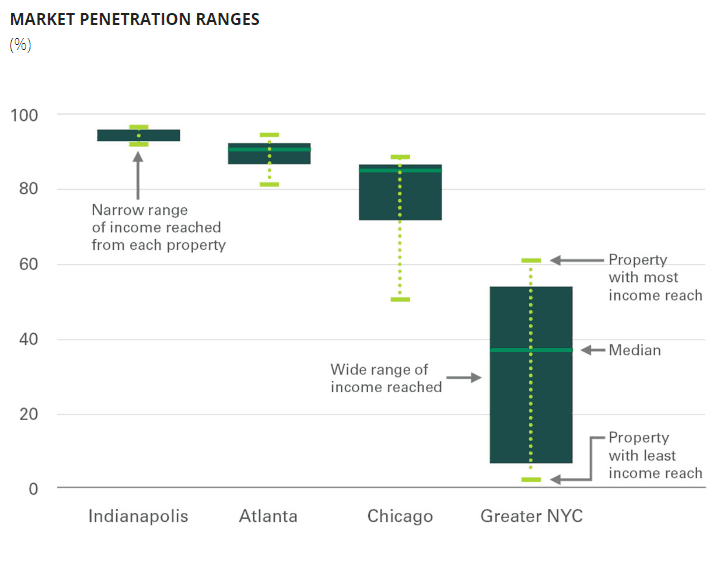In a new report, industrial real estate developer Prologis segments the market for distribution space in some interesting ways.
On the "consumption" side of logistics – meaning the facilities that are shipping to the final customer, whether that is a business (including traditional retailers) or a consumer, Prologis has defined four main categories:
Supply Chain Digest Says... |
|
|
Last Touch properties can reach large dense, affluent populations within hours. These buildings typically are the oldest and smallest, because they are in very infill locations. The "efficiency" of a Last Touch location can be measured by the time between the facility and consumer doorsteps. Building-level characteristics are often secondary to location considerations.
City Distribution properties are well-positioned to provide 1-2 day shipping to an entire large market. These buildings tend to be small to mid-sized and located in urban areas. The City Distribution, location is also paramount to efficiency, but with less urgency as compared to Last Touch. From a City facility, users can distribute to households, retail centers or businesses.
Multi-Market distribution facilities must have the right balance between location and functionality. These buildings tend to be newer and larger and located at key transportation hubs at the periphery of major urban areas. For Multi-Market distribution, effectiveness builds on transportation access to multiple consumption centers, as well as through building-level features such as size, clear height, layout, parking, and dock doors that dictate functionality for high-through-put distribution operations.
Gateway facilities are multi-market buildings that incorporate access to major sea and intermodal ports. For Gateway distribution, access to global trade routes is crucial, along with building-level features as described in the Multi-Market summary.
A key variable, Prologis says, is what amount of total income is earned within a metro market, as consumption of goods in an area is highly correlated to total income levels, which are readily available from government statistics.
"Based on these principles and conversations with customers who are engaged in Last Touch and City distribution activities, the top 25 US markets, with aggregate income of [at least] $100 billion, qualify for at least a City presence, and the top eight markets, with aggregate income of more than $250 billion, are likely targets for a Last Touch operation," Prologis says.
But of course, there are complexities. Prologis notes while shippers may seek to offer a similar level of service across cities of a certain size, the nature of cities yields several differences crucial to site selection.
(See More Below)
|
CATEGORY SPONSOR: SOFTEON |
|
|
| |
|
|
For example, the amount of income reached within a given time frame varies substantially by market. While about $600 billion of income can be reached within one hour of the center of Manhattan, that falls to $180 billion from the center of Atlanta.
However, due to size of the New York metro market, that $600 billion reachable in a one hour delivery drive from the center of Manhattan is only 56% of the metro market's total income. Conversely, Atlanta's $180 billion in income reachable from downtown Atlanta in one hour is a much higher 94% of the total market income.
Which leads to the interesting graphic from the report below, which shows the potential impact of site selection in a market in terms of income reachable in an hour's drive. So as can be seen, the range in the metro area's reachable income is very small in Indianapolis, meaning location within the market is not that important.

But in New York City, properties with the worst reach can only get to less than 10% of the total market income, and the best locations can only deliver about a 52% reach.
The full report contains a number of other looks at the US distribution space market by these four types of facilities. For example, Last Touch facilities average about 34 years in age, versus just 17 years in age for Multi-Market buildings. Last Touch facilities on average contain just over 100,000 square feet, versus more than 350,000 square feet for Gateway type DCs.
It is available from Prologis here: A New Model for Defining Logistics Real Estate
What's your take on this Prologis analysis? Let us know your thoughts at the Feedback section below.
|